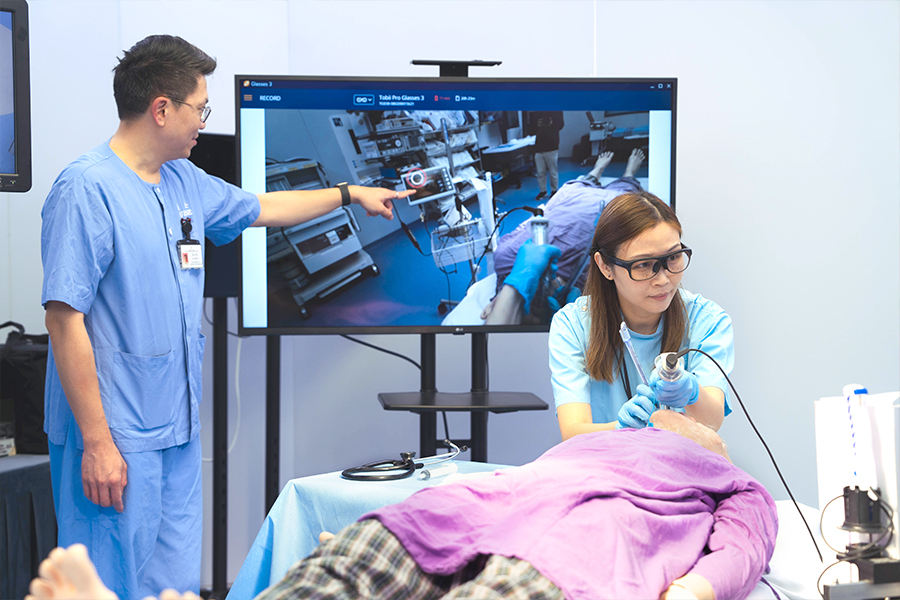Eye-tracking in training to unleash visual strategies

Eye-tracking glasses
Functions and advantages: The glasses capture the user’s gaze path and focus through sensors, which are analysed and presented on the screen. The device can aid to understand the user’s behaviour and visual strategies, suitable for clinical simulation training, expert demonstrations, safety assessments, and behavioural research.“In the past, it was unable to capture the visual focus of trainees in simulation training with video recording. Trainees relied on memory to recall during debriefing.” In this connection, eye-tracking glasses were introduced at the Nethersole Clinical Simulation Training Centre (NCSTC) at Pamela Youde Nethersole Eastern Hospital in 2020. Eye-tracking technology was applied to evaluate user’s visual attention in real-time and present it on a screen, recording metrics and analysing user’s visual patterns with artificial intelligence to improve the quality of training. Dr Natalie Leung, the Director of NCSTC, cites the findings from intubation training and says, “novices tended to focus on the patient's airway, while experienced individuals simultaneously reviewed the patient's vital signs. Visual strategies are consolidated through experience, making them difficult to teach. The eye-tracking technology makes learning experience more comprehensive. Many young healthcare professionals are amazed by it.”
Drawing inspiration from sports science and human factors ergonomics, the team began exploring the potential of utilising eye-tracking technology, explains Nurse Coordinator Tacko Tsoi. “These industries use eye-tracking glasses to analyse the visual strategies of top athletes to improve performance and the effects of visual patterns in the decision-making process of astronauts or operators performing a task. We applied this technology in healthcare training, making our hospital the first in Asia to use the glasses for simulation training purposes.” Tacko explains. The analysis of eye-tracking data can aid in safety assessments and the optimisation of work processes. “We collaborate with different departments, such as the pharmacy department to evaluate and optimise medication labels, aiming to improve operational efficiency and safety. We also collaborate with the department of occupational therapy to create training modalities that incorporate expert visual strategies and skills."